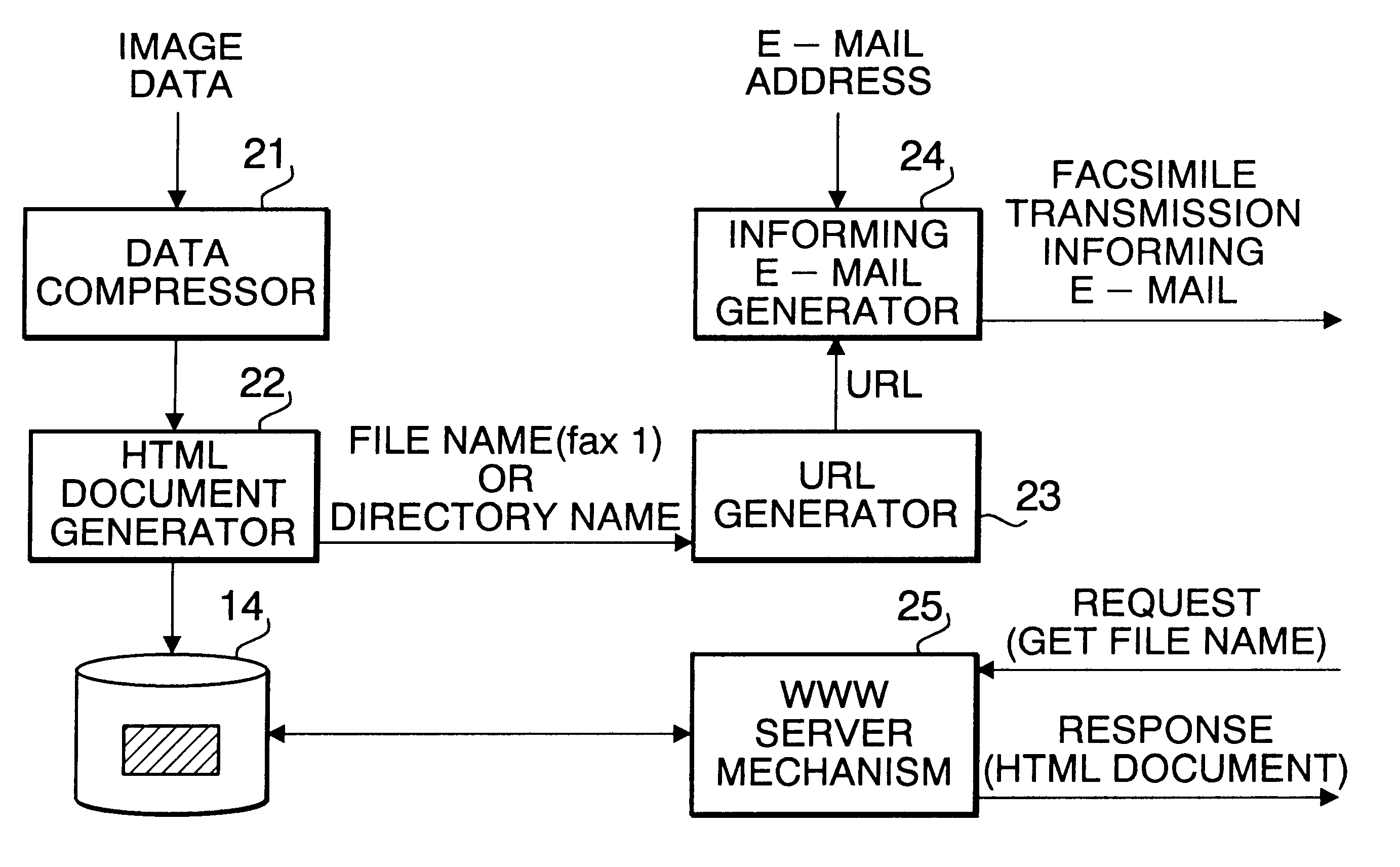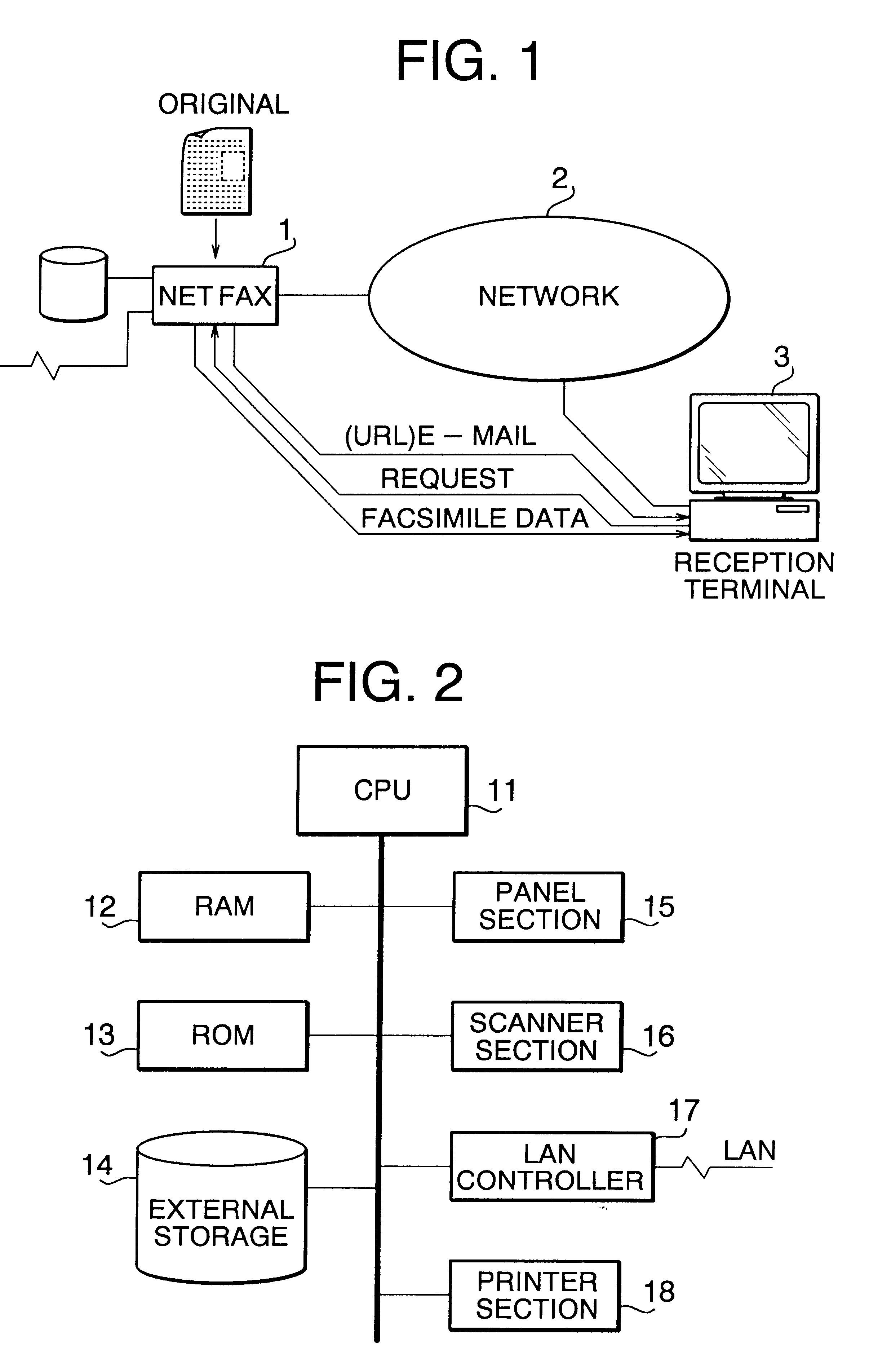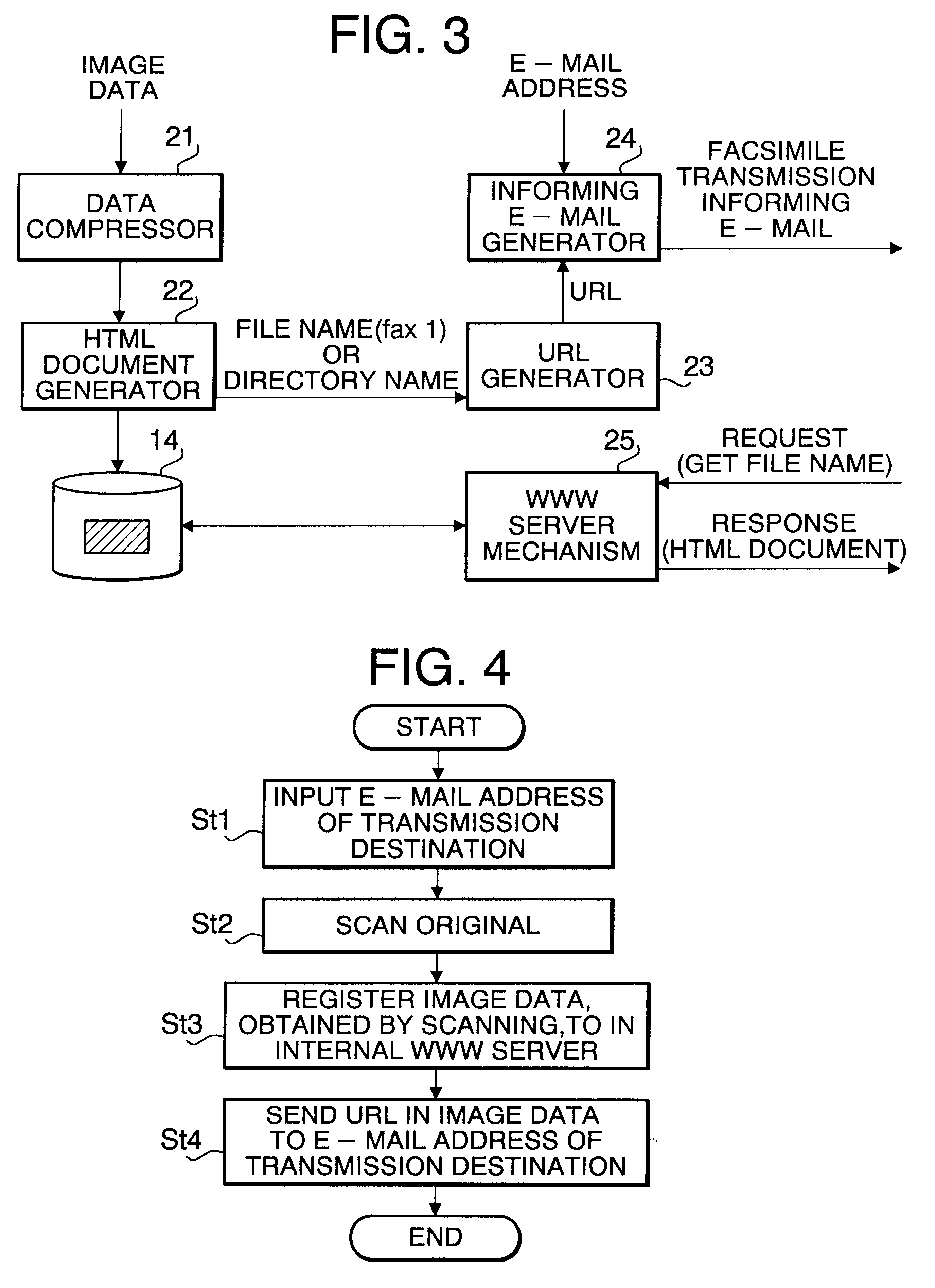Facsimile communication method and facsimile machine
- Summary
- Abstract
- Description
- Claims
- Application Information
AI Technical Summary
Benefits of technology
Problems solved by technology
Method used
Image
Examples
first embodiment
FIG. 1 schematically illustrates a facsimile communication system according to the first embodiment. A network connection type facsimile machine (NETFAX) 1 sends facsimile data to a reception terminal 3 via a communication network 2. The NETFAX 1 has a WWW (World Wide Web) server mechanism inside.
The NETFAX 1 scans an original after accepting the e-mail address of the reception terminal 3. The image data of the scanned original is registered in a storage of the internal WWW server mechanism after being converted to the form which is externally accessible as an HTML (Hyper Text Markup Language) document. Meantime, a URL (Uniform Resource Locator) for the reception terminal 3 to access the image data of the NETFAX 1 via the communication network 2 is transmitted by e-mail to the reception terminal 3.
When requiring acquisition of image data, the reception terminal 3 accesses the WWW server mechanism of the NETFAX 1 using the URL in the received e-mail and acquires the necessary image d...
second embodiment
FIG. 8 shows a functional block diagram associated with a function of deleting image data, which becomes unnecessary, from the storage. The fundamental system structure is the same as that of the first embodiment, except for the function of deleting image data from the storage.
When there is access to image data saved in the external storage 14, the WWW server mechanism 25 leaves a log for the accessed file. An access detector 31 searches the log from the external storage 14 to identify the accessed image data.
A file deleting function 32 receives the directory and file name of image data, which has been externally accessed, from the access detector 31 and deletes this image data from the external storage 14.
FIG. 9 shows a flowchart associated with facsimile data transmitting and deleting processes in the NETFAX 1. The processes (St 11 to St 14) from the identification of the e-mail address of the transmission destination, input through the panel section 15 by an operator, to the tran...
third embodiment
FIG. 10 shows the functional blocks of a NETFAX according to the third embodiment. The basic system structure is the same as those of the first and second embodiments. The NETFAX is provided with a timer section 19 for measuring the time that has elapsed since the registration of image data in the external storage 14.
FIG. 11 depicts the functional blocks of the portion that is associated with a function of deleting image data. A time-exceeded file detector 33 manages an accessible time input through the panel section 15 by an operator. As the time-exceeded file detector 33 informs the file deleting function 32 of the file name of the image data whose accessible time has been exceeded, the file deleting function 32 deletes the image data from the external storage 14.
FIG. 12 illustrates a flowchart about image data transmitting and deleting processes in the NETFAX. The time in which the e-mail address of the transmission destination, input through the panel section 15 by the operator,...
PUM
 Login to View More
Login to View More Abstract
Description
Claims
Application Information
 Login to View More
Login to View More - R&D
- Intellectual Property
- Life Sciences
- Materials
- Tech Scout
- Unparalleled Data Quality
- Higher Quality Content
- 60% Fewer Hallucinations
Browse by: Latest US Patents, China's latest patents, Technical Efficacy Thesaurus, Application Domain, Technology Topic, Popular Technical Reports.
© 2025 PatSnap. All rights reserved.Legal|Privacy policy|Modern Slavery Act Transparency Statement|Sitemap|About US| Contact US: help@patsnap.com



